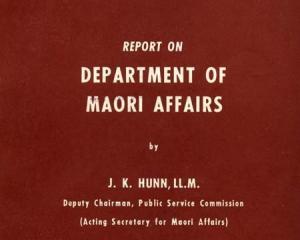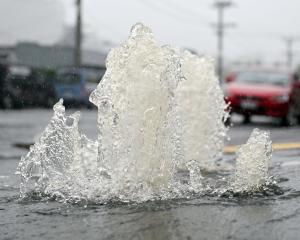
I make this statement based on a number of personal experiences that have occurred in the past 12 years. I am a carrier of a variation in the CDH1 gene. This means I had about a 70% chance of getting hereditary diffuse gastric cancer (HDGC). I say had because I had a total gastrectomy (stomach removal) in 2010, which is the only way to prevent HDGC from occurring.
The only way I ever knew that I was a carrier of this genetic mutation and at risk of succumbing to this disease is because of my whakapapa. If I did not know who I was, I might not be here today. This is not an exaggeration.

Unfortunately, the medical side of my life story has always overshadowed the value and importance of whakapapa. People have made comment to (at) me that, ‘‘your whakapapa didn’t save your life, Western medical advances did’’. Yes, the genetic research that went into the discovery of this mutation and the testing processes that evolved as a result, underpins the medical intervention that has subsequently been seen as the saviour of my life. But without whakapapa this research would never have happened in the first place.
In 1964, an unusually high number of cases of diffuse gastric cancer over successive generations were noted within the McLeod whānau, an extended Māori whānau located in the Bay of Plenty region. The common misconception was that a mākutu (an infliction of physical and psychological harm/death through spiritual powers) had been placed on them for selling land for quarrying purposes. Death was their punishment.
The land had in fact not been sold. It had instead been taken off them under the Public Works Act. The mākutu rumour had been started by others outside of the whānau to provide, for them at least, a plausible reason as to the high number of deaths for which no other explanation could be given.
The whānau always suspected otherwise. Their religious convictions forbade them from believing in mākutu. From the early 1990s they began researching other possible reasons why. They were invited by Prof Tony Reeves, the then head of the biochemistry department at the University of Otago, to a genetics conference in 1995 that confirmed their suspicions. Soon after they teamed up with Otago geneticists, who discovered that a hereditary mutation in the CDH1 gene was responsible for these deaths.
This discovery provided relief for the whānau who were now released from the spiritual shackles that had constrained their futures; they were now empowered with the knowledge to save their lives. Several other whānau from tribal areas all around the country, including my own, have been tested and found to be carrying one of many different CDH1 variants.
During this collaboration, knowledge of whakapapa was just as essential to discovering the CDH1 gene mutation and identifying who carried it, as was the science. Detailed genealogical charts were created to map who may have been hereditarily at risk of developing HDGC and the prevalence and penetrance of it within the whānau. Their whakapapa records over 14,000 names and is the largest, most complete stomach cancer pedigree of any family worldwide, and it is still growing.
In stark contrast, my own whānau is dispersed throughout New Zealand and around the world. Genealogical knowledge of our whakapapa has been severely lacking in recent decades. For more than 70 years, the intergenerational transfer of whakapapa has been interrupted.
From the 1940s onwards, many in my whānau left our Ngāti Porou tribal base for employment in urban centres around the country. This was my dad. Many never went back, others only occasionally returning to visit for short periods of time, and eventually these visits stopped happening. This was my dad. Associated with this physical detachment was a disconnection from each other, with our tribal area, and from our ancestral knowledge — from our whakapapa. This was me. But this is not me now.
My dad’s migration decisions unknowingly put my life in danger. There is a 50% chance that each of my children will inherit this gene. He unknowingly put their lives in danger too. But I have worked hard over the past 15 years to ensure that our whakapapa will save their lives.












